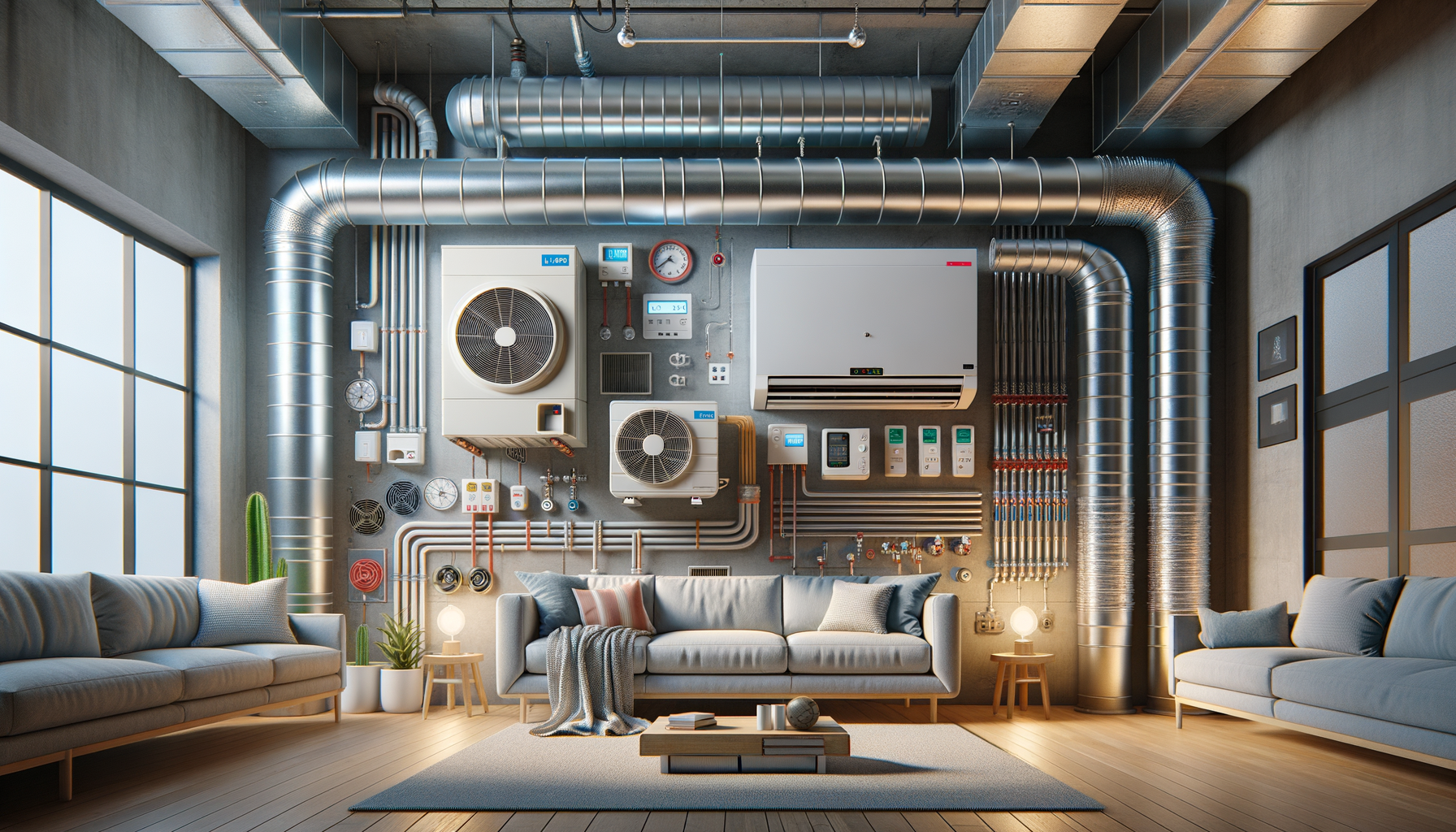
Explore HVAC Systems – Learn How They Support Comfortable Indoor Environments
Introduction to HVAC Systems
Heating, Ventilation, and Air Conditioning (HVAC) systems are integral to maintaining comfortable indoor environments in both residential and commercial settings. These systems are designed to regulate temperature, humidity, and air quality, ensuring a pleasant and healthy atmosphere. HVAC systems may help regulate temperature and air quality, making them essential for modern living and working spaces.
In today’s world, where climate control is not just a luxury but a necessity, understanding the components and functions of HVAC systems can provide insights into their role in energy efficiency and environmental sustainability. This article delves into the various facets of HVAC systems, exploring their components, functions, and benefits.
Components of HVAC Systems
An HVAC system comprises several key components that work in unison to provide heating, cooling, and ventilation. These components include:
- Furnace: The furnace is the primary source of heat in an HVAC system and is typically located in the basement, attic, or a dedicated closet. It uses various fuels such as natural gas, oil, or electricity to produce heat.
- Air Conditioner: The air conditioner is responsible for cooling the indoor air. It utilizes a refrigerant to absorb heat from the air, which is then expelled outside, leaving the indoor space cooler.
- Ductwork: Ducts are channels that distribute conditioned air throughout the building. Properly designed ductwork is crucial for efficient airflow and temperature regulation.
- Thermostat: The thermostat is the control center of the HVAC system, allowing users to set and adjust the desired temperature. Modern thermostats often come with programmable and smart features for enhanced energy management.
These components work together seamlessly, ensuring that the temperature and air quality are consistently maintained at optimal levels.
How HVAC Systems Work
HVAC systems operate on the principles of thermodynamics, fluid mechanics, and heat transfer. The process begins with the thermostat detecting the ambient temperature and signaling the system to either heat or cool the air. For heating, the furnace generates warmth, which is circulated through the ductwork by the blower motor. Conversely, during cooling, the air conditioner extracts heat from the indoor air and releases it outside, while cool air is distributed inside.
Ventilation plays a crucial role in maintaining air quality by exchanging indoor air with fresh outdoor air. This process helps in reducing indoor pollutants, controlling humidity levels, and preventing the buildup of carbon dioxide. The balanced integration of heating, cooling, and ventilation ensures that HVAC systems may contribute to energy use and air circulation efficiently.
Energy Efficiency and Environmental Impact
With growing concerns over energy consumption and environmental impact, HVAC systems have evolved to become more energy-efficient and eco-friendly. Modern systems are designed to minimize energy use while maximizing performance. Energy-efficient HVAC systems often feature:
- High SEER Ratings: Seasonal Energy Efficiency Ratio (SEER) ratings indicate the efficiency of air conditioners. Higher SEER ratings mean better energy efficiency.
- Variable-Speed Motors: These motors adjust the airflow and heating/cooling output based on the specific needs of the space, reducing energy waste.
- Smart Thermostats: These devices allow for precise temperature control and scheduling, optimizing energy use based on occupancy patterns.
By opting for energy-efficient HVAC systems, homeowners and businesses can significantly reduce their carbon footprint and contribute to environmental sustainability.
Conclusion: The Importance of HVAC Systems
In conclusion, HVAC systems are essential for creating comfortable and healthy indoor environments. They not only regulate temperature and air quality but also play a significant role in energy efficiency and environmental conservation. As technology advances, HVAC systems continue to evolve, offering improved performance and sustainability.
For anyone looking to enhance their indoor comfort, understanding the intricacies of HVAC systems is invaluable. Whether it’s selecting the right components or optimizing energy use, informed decisions can lead to better living and working conditions.


